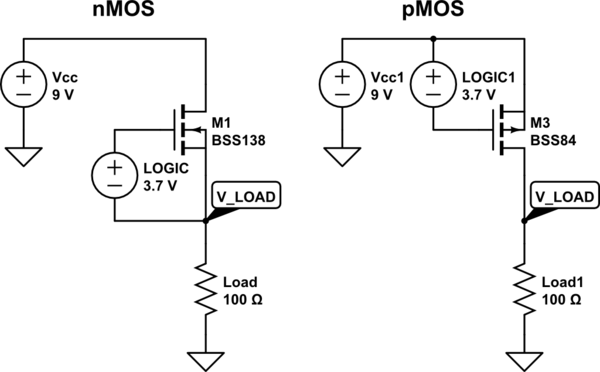The circuits you linked in your comment are correct in general. If you still don't get the expected results you may need to select different components or check if the components have the right orientation.
Below is an example circuit with suitable MOSFETs.

simulate this circuit – Schematic created using CircuitLab
Just like a N-type, the P-type conducts when there is a sufficiently large potential difference between the source and the gate terminal, but with reversed polarity (note the orientation of the high-side pMOS). Respectively, to "turn off" the MOSFET, base and source must be on the same potential. In your example you have to bring the gate of the pMOS up to 9V, which is far above your logic level.
In case the voltage to switch is higher than the logic level, a nMOS can be used to drive the gate of the pMOS. When a logic high is applied at the nMOS' gate, the nMOS (=low-side switch) pulls the gate of the pMOS to a desired level (in the example a 50:50 divider is used to get 4.5V) - the "switch is closed". Respectively, the "switch is open" on a logic low.
R2 is only required if the supply voltage exceeds the maximum rating for the gate-source voltage of the pMOS. The IRF9530 is rated for Vgs,max=20V, so pulling the gate down to GND directly would work, but in some cases, a voltage divider is required. The purpose of R3 is to limit the current required to charge the nMOS' gate capacitance.
As a rule of thumb, suitable MOSFETS should have a gate-source threshold voltage (Vgs,th - the voltage at which the device starts to conduct) of no more than half the voltage that is actually used to drive the gate. Though, the nMOS is not very critical in this case, a 2N7000 works.
An alternative approach using only one MOSFET is this:

simulate this circuit
Here, MOSFETS with low Vgs,th are chosen. Note: the logic level circuitry and the load do not share a common ground in those cases, which means you can easily fry things. The first example does not have this problem, though.





